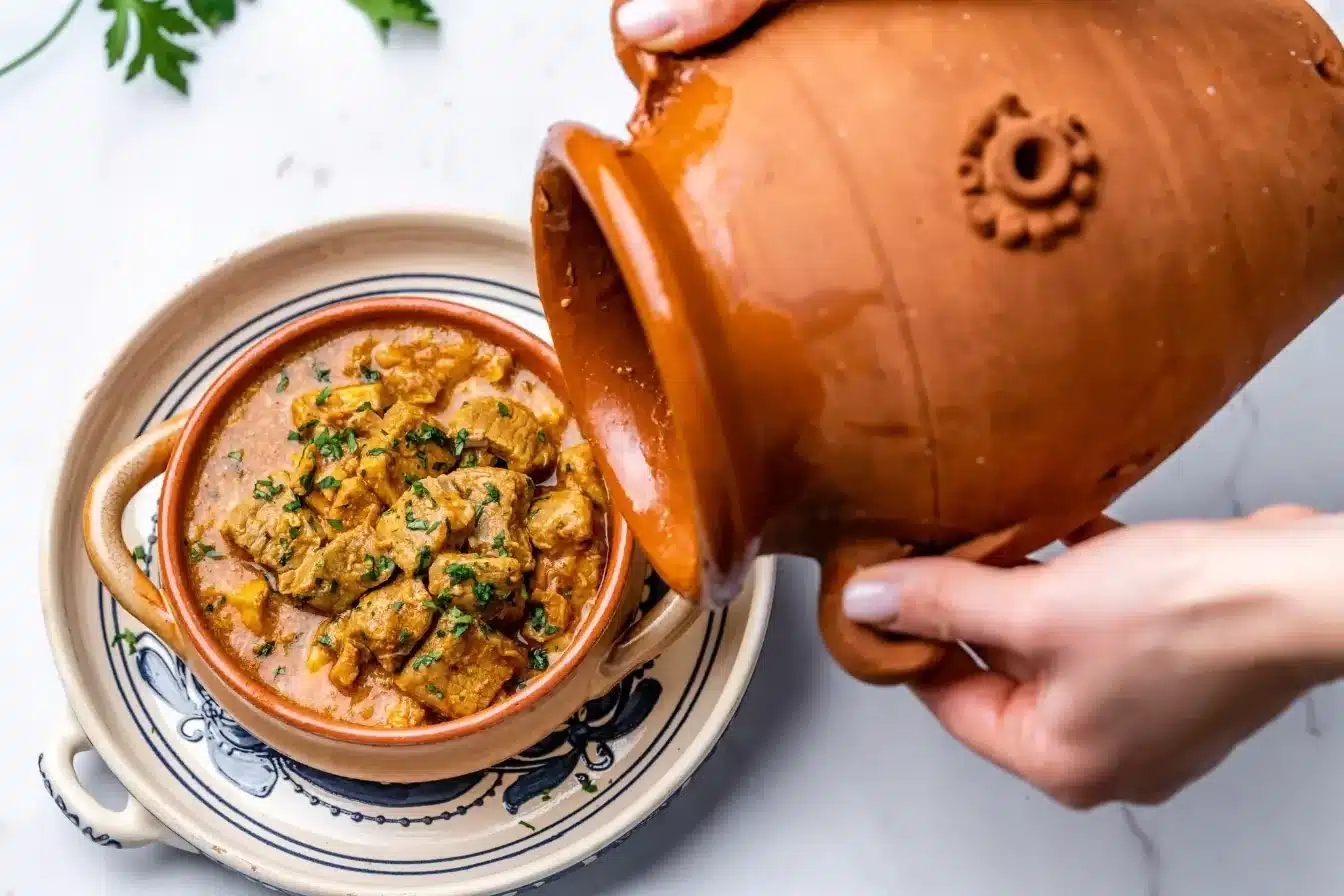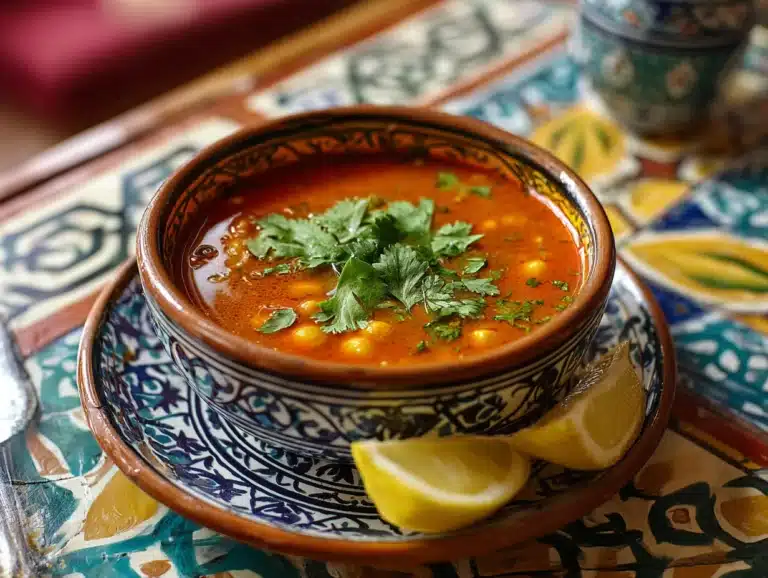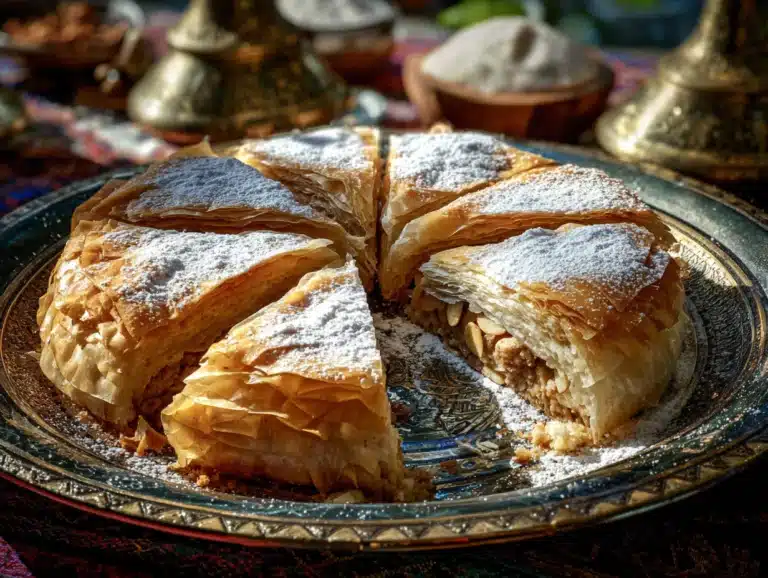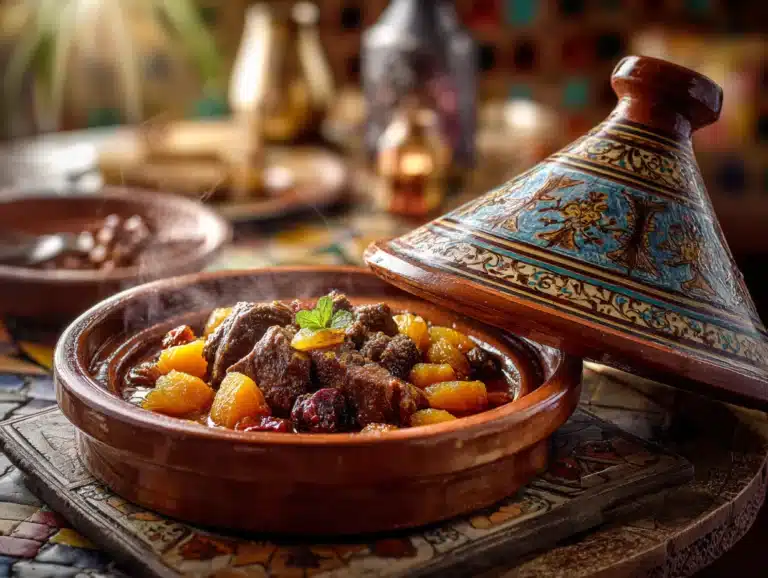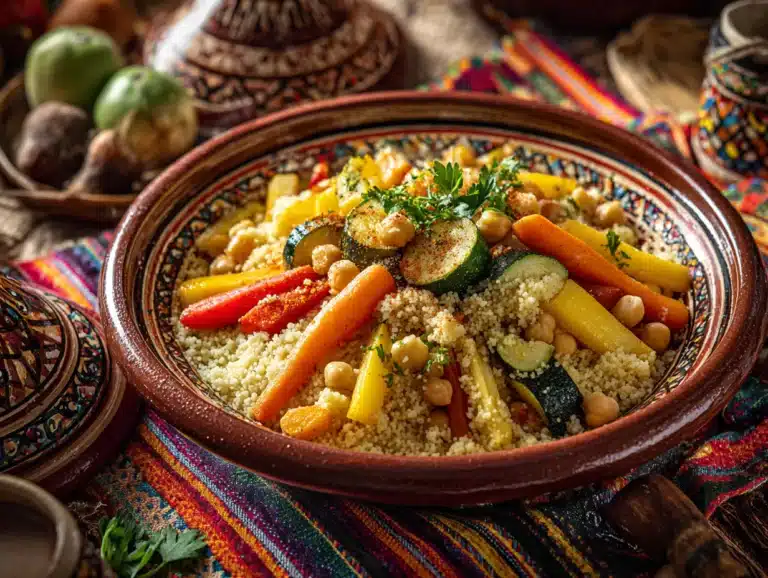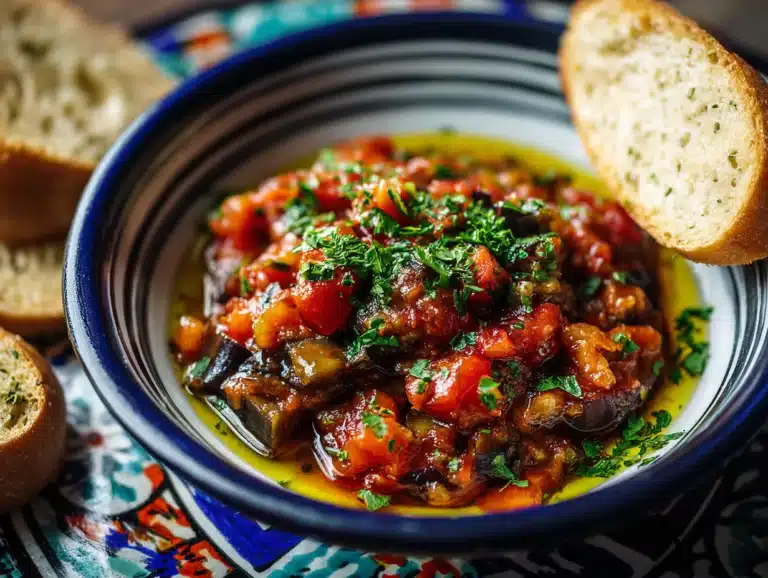Tanjia: 7 Reasons to Love Marrakech’s Legendary Slow Feast
Tanjia is Marrakech’s most iconic slow-cooked dish, traditionally prepared in clay amphora-shaped pots and cooked underground using the residual heat of public bath furnaces. This centuries-old Moroccan culinary masterpiece combines tender lamb or beef with aromatic spices, creating a melt-in-your-mouth experience that captures the essence of authentic Marrakech cuisine.
Overview of Moroccan Cuisine
Moroccan cuisine represents a magnificent fusion of Berber, Arab, Mediterranean, and Sub-Saharan influences, creating one of the world’s most sophisticated culinary traditions. The cuisine is characterized by its masterful use of spices, slow-cooking techniques, and the harmonious balance of sweet and savory flavors.
Tanjia marrakchia stands as the crown jewel of Marrakech’s culinary heritage, distinguished from other Moroccan dishes by its unique cooking method and the distinctive clay vessel from which it takes its name. Unlike tagines, which are cooked on stovetops, authentic tanjia morocco is prepared using an ancient technique that transforms simple ingredients into an extraordinary feast.
Best Time to Cook Tanjia
Tanjia marrakech is traditionally prepared for special occasions and gatherings, making it perfect for:
- Weekend family meals when you have time for the slow-cooking process
- Religious holidays like Eid al-Fitr and Eid al-Adha
- Wedding celebrations and important family gatherings
- Winter months when hearty, warming dishes are most appreciated
- Friday afternoons following the traditional Moroccan custom of preparing special meals after prayers
The dish requires several hours of slow cooking, making it ideal for leisurely cooking sessions when you can enjoy the anticipation of the developing flavors.
Cultural Significance of Tanjia
The tangia marrakech holds profound cultural significance in Moroccan society. Traditionally, this dish was prepared exclusively by men, particularly bachelors and workers who would take their sealed clay pots to the local ferrane (public bath furnace keeper) to be cooked slowly in the residual heat of the hammam furnaces.
This unique cooking method created a social ritual where men would gather, share stories, and bond while waiting for their tanjia marrakchia to cook. The dish became a symbol of brotherhood and community, often prepared for special occasions when men would celebrate together.
In modern Marrakech, restaurant tanjia marrakech establishments have preserved this tradition, though many have adapted the cooking method for contemporary kitchens while maintaining the authentic flavors and cultural significance.
Traditional Preparation Ritual
The preparation of tangia morocco involves several ceremonial aspects:
- The clay pot is blessed before use
- Ingredients are carefully layered with specific intentions
- The sealing of the pot represents trust and patience
- The communal waiting period strengthens social bonds
Ingredients Needed
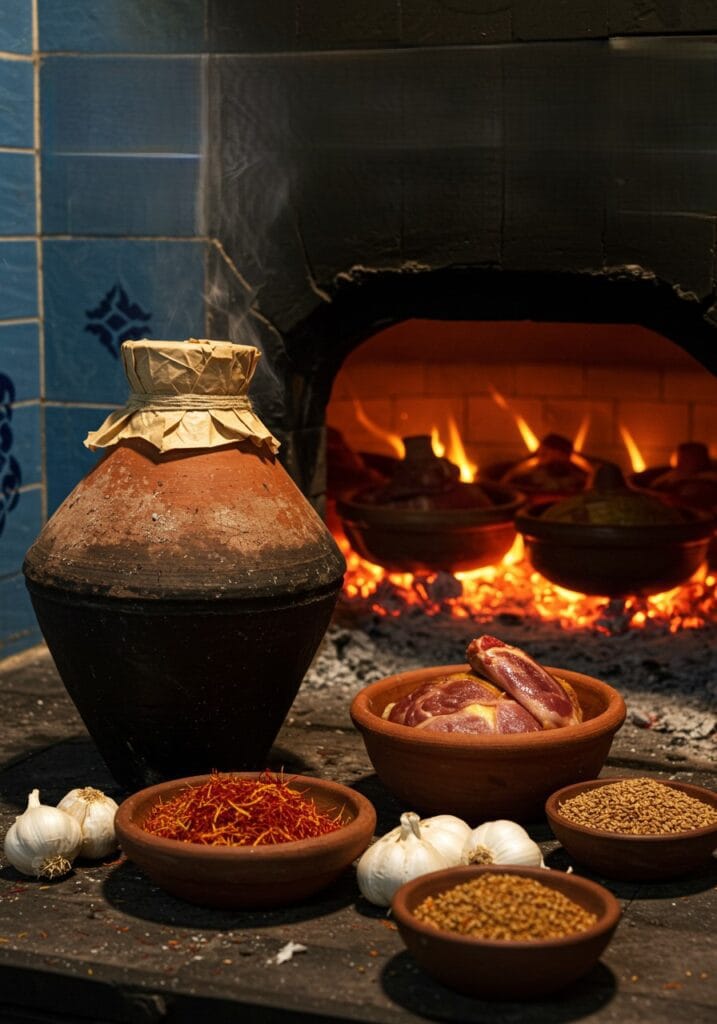
For the Meat Base
- 2 kg lamb shoulder or beef chuck, cut into large chunks
- 2 large onions, quartered
- 6 garlic cloves, crushed
- 2 preserved lemons (citron confit), quartered
- 1 bunch fresh cilantro, chopped
- 1 bunch fresh parsley, chopped
Spice Blend
- 2 teaspoons ground ginger (zanjabil)
- 1 teaspoon ground cinnamon (qarfa)
- 1 teaspoon ground turmeric (kurkum)
- 1 teaspoon ground black pepper
- 2 teaspoons ground cumin (kamun)
- 1 teaspoon ground coriander (kuzbara)
- 1 teaspoon ras el hanout (Moroccan spice blend)
Additional Ingredients
- 3 tablespoons olive oil
- 2 tablespoons smen (aged butter) or regular butter
- 1 teaspoon coarse sea salt
- 1 cup water
- 2 bay leaves
International Substitutions
- Preserved lemons: Fresh lemon zest + 1 tablespoon salt
- Smen: Clarified butter or ghee
- Ras el hanout: Mix of cardamom, cloves, cinnamon, and paprika
Step-by-Step Instructions
Preparation Phase
- Prepare the clay pot: If using a traditional tanjia pot, soak it in water for 30 minutes. For home cooking, use a heavy-bottomed Dutch oven or slow cooker.
- Season the meat: Pat the meat dry and season generously with salt and half of the spice blend. Let it rest for 30 minutes at room temperature.
- Prepare aromatics: Crush garlic cloves, quarter the onions and preserved lemons, and roughly chop the herbs.
Cooking Process
- Layer the ingredients: In your cooking vessel, create layers starting with onions at the bottom, followed by seasoned meat, garlic, preserved lemons, and herbs.
- Add spices and fats: Sprinkle the remaining spice blend over the ingredients, then add olive oil and smen. Add bay leaves and pour water around the edges.
- Seal the pot: Cover tightly with aluminum foil, then place the lid on top. For authentic preparation, seal the edges with a flour-water paste.
Traditional Cooking Method
- Slow cooking: Place in a preheated oven at 300°F (150°C) for 3-4 hours. For the most authentic experience, cook at 275°F (135°C) for 5-6 hours.
- Check periodically: Every 90 minutes, quickly check that there’s sufficient liquid. Add hot water if needed, but avoid opening too frequently.
- Final stage: In the last hour, remove the foil to allow slight browning while maintaining moisture.
Modern Adaptations
For slow cooker: Cook on low for 6-8 hours or high for 3-4 hours.
For pressure cooker: Cook on high pressure for 90 minutes, then natural release.
Cooking Tips & Tricks
Authentic Preparation Secrets
- Use a clay pot: If possible, invest in a traditional tanjia pot for the most authentic flavor and texture.
- Don’t rush the process: The magic of tangia recipe lies in the slow, gentle cooking that breaks down tough meat fibers.
- Minimal liquid: Unlike stews, tanjia relies on the natural juices from meat and vegetables. Add water sparingly.
- Proper sealing: Create an airtight seal to trap steam and concentrate flavors.
Flavor Enhancement Tips
- Toast whole spices: Lightly toast cumin and coriander seeds before grinding for deeper flavor.
- Quality preserved lemons: Use properly aged preserved lemons for authentic taste, or make your own 4 weeks in advance.
- Marinate overnight: For even richer flavor, marinate the seasoned meat overnight in the refrigerator.
Texture Perfection
- Choose the right cut: Shoulder cuts with marbling create the most tender results.
- Don’t overcrowd: Allow space between meat pieces for even cooking.
- Rest before serving: Let the tanjia rest for 15 minutes after cooking to redistribute juices.
Serving Suggestions
Tanjia marrakech is traditionally served as the centerpiece of a communal meal. Here are authentic serving recommendations:
Traditional Accompaniments
- Khubz (Moroccan bread): Essential for soaking up the rich juices
- Moroccan mint tea: Balances the rich flavors
- Simple salad: Tomatoes, cucumbers, and onions with olive oil and lemon
Complete Meal Ideas
- Start with harira soup or zaalouk (eggplant salad)
- Serve tanjia with couscous or Moroccan rice pilaf
- Finish with chebakia or ma’amoul for dessert
Presentation Tips
- Serve directly from the clay pot for authenticity
- Garnish with fresh herbs and lemon wedges
- Provide small spoons for the tender meat that falls off the bone
Storage & Leftovers
Proper Storage
Tanjia actually improves with time, making it excellent for meal prep:
- Refrigerator: Store covered for up to 4 days
- Freezer: Freeze in portions for up to 3 months
- Original pot: If using clay, transfer to glass containers for storage
Reheating Instructions
- Stovetop: Reheat gently with a splash of water or broth
- Oven: Cover and reheat at 300°F for 20-25 minutes
- Microwave: Heat in short intervals, stirring between
Leftover Transformations
- Tanjia couscous: Serve over fresh couscous with vegetables
- Shepherd’s pie: Use as filling with mashed potato topping
- Moroccan sandwiches: Shred meat for bocadillo or pita pockets
Common FAQs
What makes tanjia different from tagine?
Tanjia differs from tagine in several key ways: it’s cooked in a clay amphora rather than a cone-shaped pot, traditionally uses only meat and basic seasonings without vegetables, and employs a unique underground cooking method using residual heat from public bath furnaces.
Can I make tanjia without a clay pot?
Yes! While a traditional clay tanjia pot provides the most authentic flavor, you can successfully make tangia recipe using a Dutch oven, slow cooker, or even a pressure cooker. The key is maintaining low, steady heat and proper sealing.
How long does authentic tanjia take to cook?
Traditional tanjia marrakchia takes 4-6 hours when cooked in the residual heat of hammam furnaces. In home ovens, plan for 3-4 hours at 300°F, or 5-6 hours at 275°F for the most authentic texture.
What’s the best meat for tanjia?
Lamb shoulder is traditional and provides the best flavor and texture. Beef chuck roast is an excellent alternative. Choose cuts with good marbling for the most tender results.
Where can I find the best tanjia in Marrakech?
The best tangia in marrakech can be found at traditional establishments like Dar Essalam, Chez Ali, or local neighborhood restaurants in the medina. Many tanjia restaurant marrakech locations still use traditional cooking methods.
Can I prepare tanjia ahead of time?
Absolutely! Tanjia is perfect for advance preparation. You can assemble the ingredients the night before and cook the next day, or cook completely and reheat when ready to serve.
Try this authentic Moroccan tanjia recipe today and experience the legendary flavors of Marrakech in your own kitchen! This traditional dish brings centuries of culinary wisdom to your table, creating an unforgettable dining experience that connects you to Morocco’s rich cultural heritage.
Subscribe to our newsletter for more authentic Moroccan recipes and cooking tips straight from the heart of Morocco!

